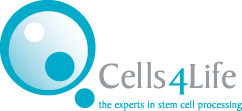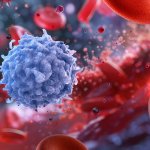For some mums-to-be, a natural childbirth is the go-to option to feel in control of their pregnancy. If you’re choosing to push through the pain, you might be wondering what exactly that means for baby’s big arrival. Here is our guide to everything you need to know – including the logistics of natural childbirths and cord blood banking.
1. What is natural childbirth?
Simply put, a natural birth is when a mother chooses vaginal delivery without most – or in some cases, any – medical intervention. This can range from the choice of doctor to the type of pain relief the mother uses. Once upon a time, this practice was fairly common; nowadays, it is much less so.
2. How does a natural birth work?
There are two main methods for a successful natural birth.
- Lamaze technique – this technique teaches that birth is normal, natural and healthy but stresses that it’s up to each mother to decide if she wants pain relief.
- The Bradley method – this method focuses on a natural birth and the active participation of a ‘birth coach’. It aims to avoid all medications unless they are essential. The Bradley method also promotes a good diet and exercise during pregnancy, as well as relaxation and deep-breathing exercises to help mothers cope during labour.
3. Can natural birth be painless?
In most cases, it is highly unlikely that a natural birth would be entirely painless – mainly because mothers eschew all pain relief or assistance.
However, mums-to-be often take certain measures to mitigate their pain and improve the process. These could include hypnobirthing, yoga and meditation, massage, taking baths or showers, having a water birth, and visualising a pain-free pregnancy.
You might also want to consider using a doula, as it can reduce your need for pain medication, shorten labour and give you peace of mind thanks to their extra knowledge and skills.
4. What if I can’t handle the pain of a natural birth?
Of course, for some mums, the pain proves to be too much and if that is the case, doctors can still administer medication. Don’t feel bad if you can’t sustain the pain – labour lasts a long time, and there is no shame in needing some assistance.
5. Why choose natural childbirth? What are the benefits?
For some mums-to-be, foregoing medical interventions makes them feel in control of their baby’s birth. It can also be empowering for many expectant parents, as giving birth without pain relief is quite the achievement.
It can also be a way of bonding with your baby and birthing partner – you’ll almost definitely need their support to get through the pain.
For other expectant parents, natural birth is an attractive option because they are still able to move during pregnancy whereas epidurals confine them to their beds. This also means that the mother can move sooner after birth, whereas pain medication can leave them feeling groggy and numb.
The lack of pain medication also could make pushing easier and more effective, because the mother can still feel the sensations.
6. What are the risks?
Because natural childbirth involves eschewing medication and interventions, it is generally very safe. However, it can be dangerous if the mum-to-be ignores her birth team’s recommendations or refuses an intervention if something doesn’t go to plan.
Choosing natural birth can be a big decision, and it can therefore be disappointing if something goes wrong. It’s crucial, however, to keep an open mind because in an emergency, medical help could save you and your baby’s life.
It’s also worth remembering that choosing a natural birth means you’ll feel everything; the pain is often much more intense than anticipated and can often seem unbearable. Because of this, it might turn out that you require a general anaesthetic – this occurs if your baby’s heart rate drops and you haven’t had an epidural, as you made need a C-section.
7. Where can I have a natural childbirth?
There are three main options when it comes to a natural childbirth: giving birth in a hospital, a birth centre, or at home.
8. Is a natural birth compatible with cord blood banking?
Cord blood collection takes place after the birth, in a separate room. Once you have delivered the placenta, the cord is handed to your phlebotomist for the collection to take place. Because of this, stem cell collection doesn’t interfere with your birth plan – there is no medical intervention, and therefore no need to add anything unnatural to the process.
Request a Welcome Pack
Find out more about cord blood banking by downloading a Welcome Pack now.








